

| A summary of the Eakring recording area |
| The recording area spans some eight square kilometres of typical mid-Nottinghamshire countryside, covering typical arable farmland between the villages of Eakring and Kersall. Eakring lies at the western end of a low sided valley, with Kersall situated further east. | ||
| .... | ||
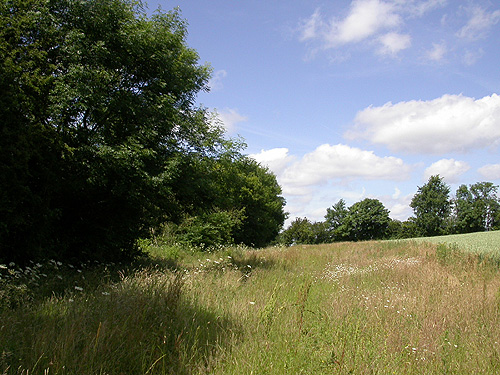 |
Woodland is
fragmented and acreage is relatively small. The two main
woods are both private, with no access to the public away
from footpaths. Both woodlands are contrasting. Lound
Wood is a mixed woodland, parts of which are just
reaching maturity. Hare Hill Wood on the other hand, is
typical mature, deciduous woodland, managed by the
Kingston Estate. Eakring Flash is the largest and most recently formed area of water and become more widely known to the birding fraternity, after the occurrence of the Spotted Crake there in 2001. Much smaller ponds can be found elsewhere however, but Eakring Flash provides the focal point for much of the bird watching here. The Beck represents the only moving water, running through the valley in an east-west direction and feeding Eakring Flash. At it's widest point near Kersall, The Beck measures just eight feet across. Most of the farmland lies on a clay-based soil, which years of agriculture has gone some way to improving. |
|
| .... | ||
| This has created a better soil quality in some parts, but many areas are still subject to water-logging during periods of heavy rain. The dominant crops in use today are Cereals and Oil-seed Rape. Fields of these make up the bulk of the study area, replacing much of the meadowland that was once present. Today's remaining remnants are given protection by the Nottinghamshire Wildlife Trust at it's Eakring Meadows Nature Reserve. Like most other areas within the county, the Eakring area has suffered from large-scale hedgerow removal in the past, enough to the extent that 50 % of which was present during the 1950's, now no longer exists. | ||
| Eakring Flash ...Centred at
SK675629 |
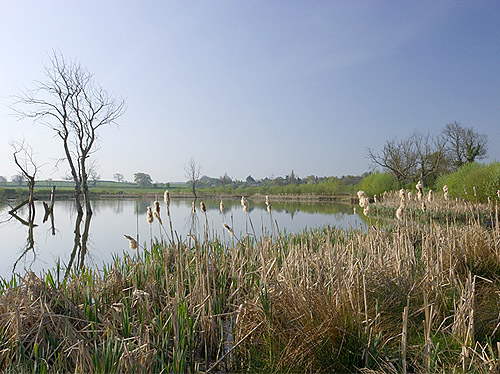 |
Formed virtually
overnight by mining subsidence in 1997, Eakring Flash
represents the largest body of water within the recording
boundaries. The occurrence of the female Spotted Crake,
ensured that the site became physically known to a much
greater number of birdwatchers than it had previously. It stands on what was agricultural farmland. The original meadows that were once here, have long since fallen under the plough. Now that the area is undisturbed, several species which once flowered in profusion, have begun recolonising the site. Cowslip, Ragged Robin and Common Fleabane, can now be found flowering once again, among the various mix of Rushes and Sedges which cover much of the site. Previously small areas of Bulrush, have now totally circumferenced the southern end and a section of the western side. |
|
| .... | ||
| The growth of
copious amounts of Willow and Sallow scrub, help provide
much needed cover and feeding areas for tired migrants.
It has however, become rather too invasive in recent
times and is in need of some selective thinning work.
Sedge Warbler is a regular breeder here. Up until 1998,
breeding Sedge Warblers were restricted to just two pairs
at Penny Pasture Common and occasional breeding attempts
elsewhere. Nowadays, Eakring Flash regularly holds around
seven pairs. Whitethroats have also benefited in recent
breeding seasons, finding the large Nettle-beds ideal
habitat now that many of the hedgerows have disappeared. Lack of any permanent shoreline since 1998 was caused by both the healthy growth of marginal plants and a slight rise in water levels, possibly due to a narrowing and some restricting plant growth along The Beck at a point just north-east of Eakring Flash. Greater Willowherb spread so quickly along the shoreline, that thinning work was carried out the following year, to try and relieve the situation. Only at the southern end, is the water level regularly low enough to create any suitable wader habitat. Completing the site are two hedgerows (known as the old and new hedges) Running alongside The Beck, the old hedge regularly attracts good numbers of passage birds. Consisting mainly of Hawthorn, Elder and occasional Oak and Ash trees, it is little suprise that migrant warblers find it particularly attractive, especially during the Autumn. Interestingly, all the area's Reed Warbler records have come from the old hedge, with birds showing a particular fondness for Elders. The new hedge was planted in 1998, the Hawthorn rapidly becoming established and after just two years was providing additional nesting habitat for several species. It's also regularly used by Whichats and more recently by migrant Stonechats. Site importance Eakring Flash is of considerable importance locally, representing the largest body of water in the area, with surrounding rank vegetation habitat. |
||
| Red Hill ... Centred at
SK670631 |
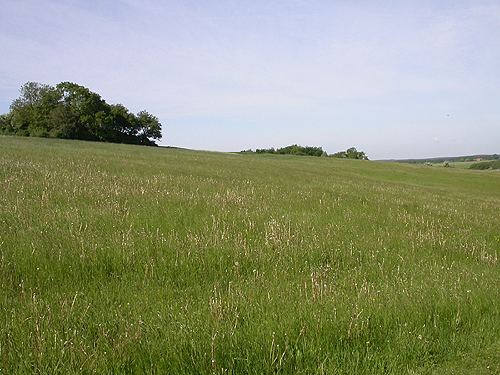 |
The highest point of the
area and used primarily for visible migration watches in
both Spring and Autumn because of it's extensive views,
Red Hill stretches from Eakring village north and past
Lound Wood towards Wellow, giving superb views in all
directions. Two areas of cover are provided by a mature Hawthorn copse and small numbers of mature Oak and Sycamore trees. That left today, is just a fraction of that which once stood here until the 1970's, when a large section along the western-side was covered by dense Hawthorn scrubland. Today's remaining hedges are used as a migration route by a variety of birds. Rarities have included Red Kite, Honey Buzzard, Kittiwake and Twite. It is often used as a stop-off point for migrant Redstarts, but more especially Wheatears in the Autumn. Red Hill is also the most productive site, from which to record migrating Red Admiral butterflies in Autumn. Studies in 2000, produced a total of 120 migrant Red Admirals through the area. Included in this was a three hour total of 82 butterflies moving south on September 30th. |
|
| .... | ||
| Clouded Yellows were also noted during the same period. August 3rd 2003 saw even higher numbers, when well over 1100 butterflies (mostly Painted Ladies) went through in around five hours. | ||
| Tug Bridge Farm.and Eakring Field Farm ...Centred at
SK689622 and SK696620 |
| Both are cereal producing farms and fairly typical with Tug Bridge Farm having the area's only dairy herd. A series of hedged pastures surround the immediate vicinity of the farm, attracting migrant Wheatears in Spring and Autumn. Eakring Field Farm is more open due to this area suffering severe hedgerow loss over the years. This is the most favoured area for Quail here, with males calling in 1998 and more recently in 2001. |
| Eakring Meadows
Nature Reserve ...Centred at
SK706620 |
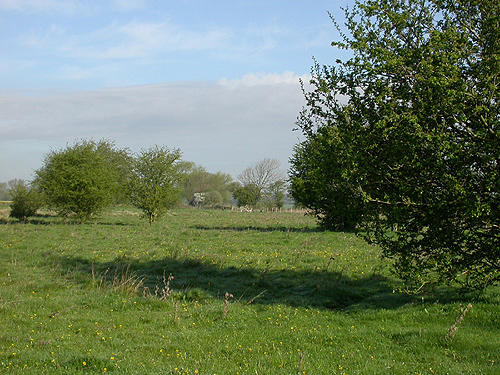 |
The whole of the reserve
lies from the southern outskirts of Kersall village,
stretching west to an area north of Eakring Field Farm. Bordered on most parts by a series of very old hedges, sections of which are maintained by using the traditional "Laying" method. Over many years these hedges have become dense in places, creating habitat for a varied range of wildlife. Hedges break up the reserve into a series of varying sized meadows, many of which differ distinctly in the amount and variety of flora. Eakring Meadows is bordered on it's northern edge by The Beck which runs from west-east through the reserve. Several copses of mainly Willow and Hawthorn exsist, these helping to enhance the reserve's attraction to birds. At the western-most end of Eakring Meadows, lies an area of "common" land. Known as Penny Pasture Common, this is the most attractive part of the reserve for birds and is an important site locally for species such as Snipe and regular migrants like Redstart and Whinchat. |
|
| .... | ||
| The small
water area within the Common, held the only breeding
Sedge Warbler in the area, until the formation of Eakring
Flash in 1997. A later grazing (and far less continuous)
of Penny Pasture Common, would allow more time for late
ground-nesting birds to complete incubation and rearing
of young and also aid the recent colonisation attempt by
the Brown Argus butterfly. This would certainly help
breeding attempts by Snipe and Grasshopper Warbler (Penny
Pasture Common holds singing male Grasshopper Warblers
each year) Quail have also been present in 1998 and more
recently in 2001. Any nesting attempts would most likely
have failed, due to the considerable disturbance by
livestock. Recent over-grazing and damage by cattle, has
reduced the amount of vegetation around the pool. This
has seen a reduction in breeding Sedge Warbler and Reed
Bunting, but encouraged much higher numbers of
over-wintering Teal, Snipe and Jack Snipe. Penny Pasture Common is undoubtably more attractive when comparisons are made to the rest of the reserve. The scattered Hawthorn scrub (a vital aspect to maintain in future years) is favoured by many migrants during the Autumn. The north-east corner creates a warm sun-trap, where scattered Elder bushes along the old hedgerow, attract Warblers and newly arrived Winter Thrushes, more-so than perhaps other hedgerow plants. Migrating birds can be tracked moving from east to west throughout the reserve, but often make prolonged stays here. The dividing hedgerow between Penny Pasture Common and the adjacent meadow has remained uncut for many years and appears to be dense mature Hawthorn scrub rather than actual hedgerow. This of course creates plenty of cover which many birds prefer. Site importance Eakring Meadows is of considerable Nottinghamshire importance, representing one of few remaining areas of neutral grassland in the county. |
||
| Church Hill ...Centred at
SK683619 |
| Is situated due east of Eakring village. The openess of this area, with an almost complete lack of hedgerow, means that the north-facing fields are large and attractive to species such as Golden Plover. Wheatears occur on passage in bare fields on both Spring and Autumn passage. |
| Leyfields and
Park Farms ...Centred at
SK683638 and SK702630 |
| Leyfields and Park Farms are situated North-East and North of Eakring village and Penny Pasture Common respectively. Both are large, predominantly cereal and Oil-seed Rape producing. |
| Eakring village ...Centred at
SK674622 |
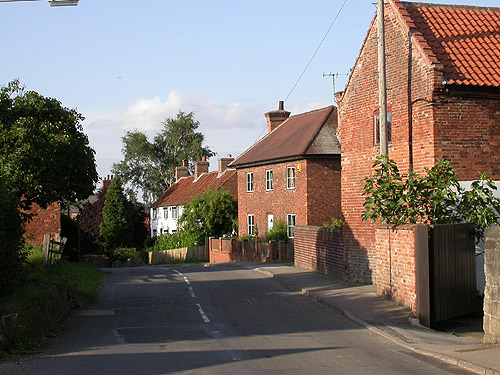 |
Most Nottinghamshire
villages contain a wealth of habitat which birds find
extremely attractive. Eakring village is certainly no
exception to this rule, with many gardens containing a
variety of large shrubs and trees. A small field in the centre of the village makes it slightly more unusual and in time is most likely to be built on. Increasing amounts of building renovations and new housing have taken place in the last two years. Much of this new building work has taken place in the larger gardens within the village and has seen the removal of some useful garden habitat. It has also been proposed to recommence oil-drilling in the future and to site four wind turbines just west of the village. |
|
| Oil Bore Holes ...Centred at
SK672618 |
| Situated on
the outskirts of Eakring village, Oil Bore Holes is a
small but fine example of scrubland habitat, which is
rich in both flora and fauna. The site is divided into
two sections (one considerably more overgrown) and
seperated by an old hedge. The scrub is entirely Hawthorn
and Bramble, with additional cover supplied by remnants
of an old orchard. The density of flora attracts
butterflies and the site produced records of Brown Argus
during both broods in 2000. Parts of the site contains
dense Hawthorn scrub and remnants of an old orchard, with
a much more overgrown section hidden behind old hedges
and virtually inaccessible. This is also a good site for
late warblers and much of the site can be viewed from the
metal gate situated on the public footpath. Site importance Is an area that is distictly worthy of protection on both a local and county basis. Because of it's location within Eakring village, the area is deemed threatened by future building work. |
||
| Kersall village ...Centred at
SK714621 |
| Kersall is many times smaller than Eakring, but gardens of a similar nature to those of Eakring do attract many species. Situated at the southern side, is a series of small discreet ponds, surrounded by large Hawthorn hedgerows. Viewing is limited to only one of these from public access points. Hunt's Meadow in the same area, marks the eastern-most boundary of the Eakring Meadows complex. |
| Hare Hill Wood ...Centred at
SK708626 |
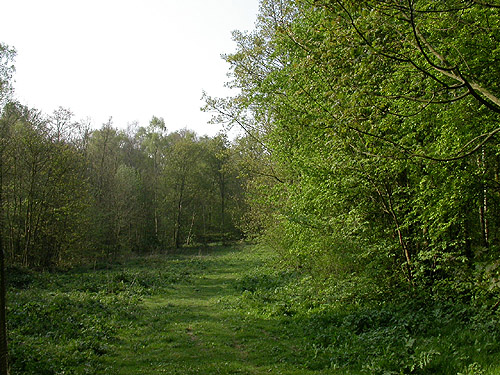 |
Owned and managed by the
Kingston Estate, the strictly private Hare Hill Wood,
provides the region with it's largest area of deciduous
woodland. The wood is split into two halves, the largest
on the southern facing slope of Hare Hill, with a
narrower strip of woodland at the top of the hill. It is the largest of the two sections, which provides much of the fauna interest throughout the year and species' breed at highest densities in the section growing on the south-facing slope of the hill. Despite being an identical habitat to the rest of the wood, birds presumably find the warmer micro-climate created here beneficial. Breeding birds include all the commoner warbler species and scarcer birds like Marsh Tit. It is understood that there are plans by the estate to clear-fell a section of the eastern part of the wood at some time in the future. This would initially have a detrimental effect, but may present species like Woodlark with a breeding opportunity if felling does occur. It may be more likely that this section of Hare Hill Wood will be thinned in much the same way as has took place in other parts. |
|
| .... | ||
| Hare Hill
Wood's butterflies represent most of the expected
commoner species and is the site of the area's only
White-Letter Hairsteak colony, the adults of which can
often be seen along the footpath which runs between the
two woods. The Speckled Wood became common here during
2000, after the initial first sighting of the species
here during the Spring. The fact that many of Hare Hill Wood's butterflies are increasing, is undoubtably due to the thinning work that was carried out within the wood during the early part of 1999. This greatly opened up some sections of the wood which were previously overgrown and allowed much of the wood's understorey to become re-established. Although this thinning was primarily conducted for the rearing of the Pheasants, the work was carried out with other wildlife in mind, creating more suitable habitat for breeding warblers and other species. Site importance Represents the largest area of deciduous woodland. |
||
| Lound Wood ...Centred at
SK677635 |
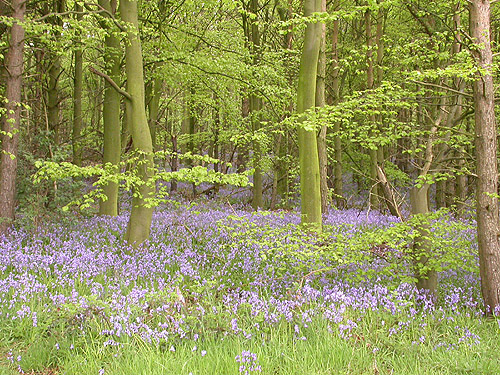 |
Another privately owned
woodland is Lound Wood, situated directly north of
Eakring Flash. Lound Wood is positioned very similar geographically, to Hare Hill Wood, with much of it on a south-facing slope. It is however, greatly different in it's flora. Certainly, the site has been woodland for many years, judging by the healthy carpet of Bluebells and Wood Anemones which grow on the woodland floor in early Spring. It has though in the past, undergone some clear-felling as most of the trees in the south-facing section are only just reaching anywhere near the level of maturity, as trees elsewhere in the wood. This new section is also largely coniferous, containing large amounts of Scot's Pine,some Larch, Ash and Oak. Originally planted thickly, on-going thinning work is slow and some recent, strange understorey planting, has seen a mixture of both native and non-native plants growing. Lound Wood holds similar breeding birds to Hare Hill Wood, but the coniferous sections of the wood, means that it is the only regular breeding site for tiny and vulnerable populations of Goldcrest and Coal Tit. |
|
| .... | ||
Site importance Sections of Lound Wood represent the largest area of coniferous woodland, with a traditional woodland under-storey of Bluebell Hyacinthoides non-scripta and Wood Anemome Anemone nemorosa. |
||